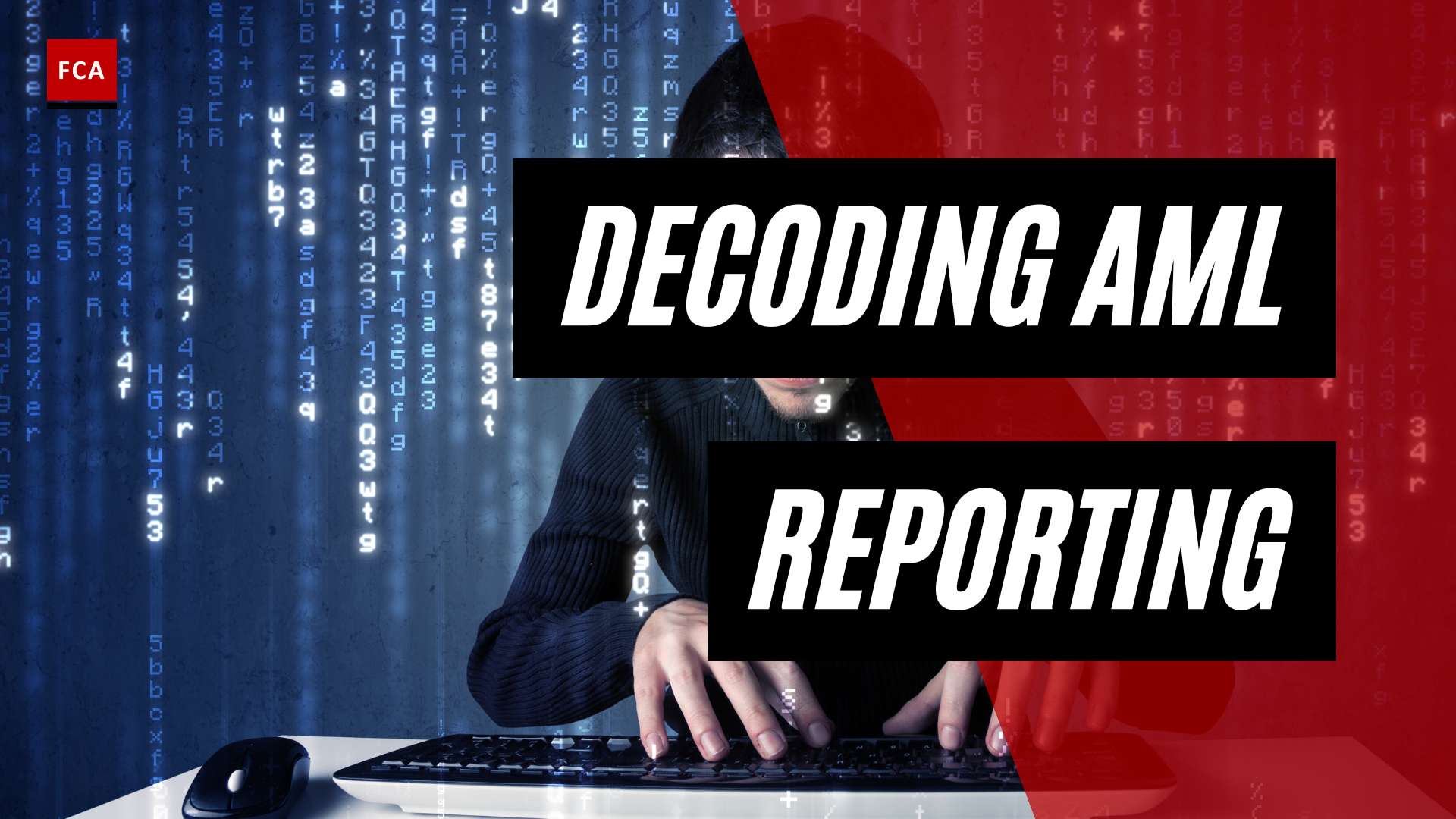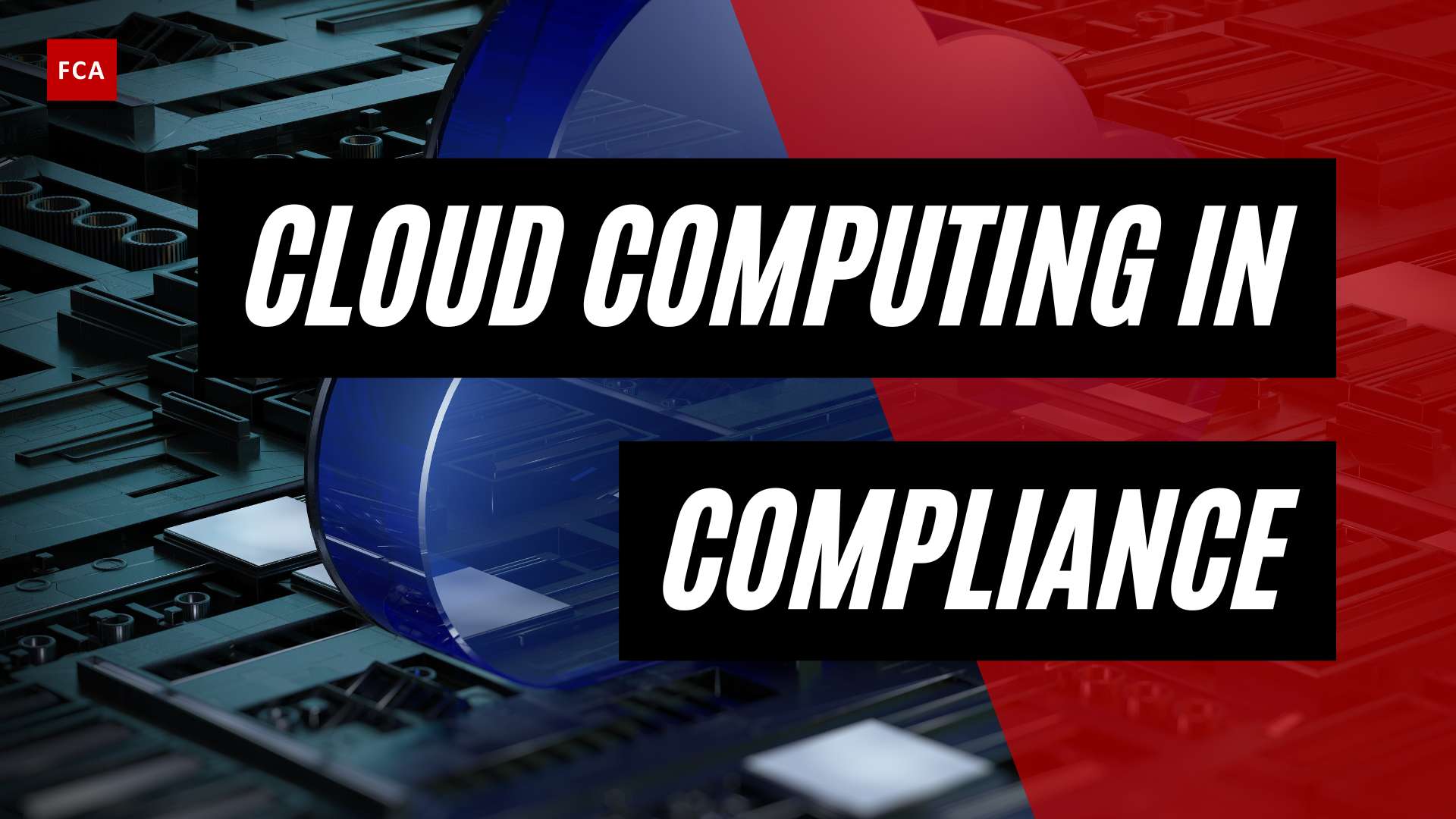Comprender los programas de cumplimiento de AML
Cuando se trata de combatir el lavado de dinero y otros delitos financieros, la implementación de programas efectivos de cumplimiento contra el lavado de dinero (AML) es esencial para las instituciones financieras y las empresas. Estos programas están diseñados para detectar y prevenir el lavado de dinero, la evasión fiscal, el fraude y las actividades de financiamiento del terrorismo, asegurando el cumplimiento de los requisitos regulatorios y protegiendo la integridad del sistema financiero.
Importancia de los programas de cumplimiento de AML
Las instituciones financieras de todo el mundo deben adoptar e implementar prácticas de lucha contra el blanqueo de capitales para cumplir con los diversos organismos reguladores. Incidentes recientes han demostrado que aquellos que violan las leyes y regulaciones corren el riesgo de multas severas y daños a la reputación, lo que enfatiza la necesidad de programas efectivos de AML (Flagright). Un programa integral de cumplimiento de AML debe centrarse en detectar y denunciar actividades sospechosas relacionadas con delitos financieros a las autoridades competentes.
Al contar con un programa de cumplimiento de AML, las empresas pueden:
- Mitigar los riesgos asociados con el lavado de dinero, el financiamiento del terrorismo y otros delitos financieros
- Cumplir con los requisitos reglamentarios de AML y demostrar un compromiso con los estándares legales y éticos
- Proteger sus activos y evitar pérdidas financieras
- Salvaguardar su reputación en la industria financiera
- Contribuir a la integridad general del sistema financiero
Componentes clave de los programas de cumplimiento de AML
Un programa eficaz de cumplimiento de AML consta de varios componentes clave que trabajan juntos para garantizar la detección y prevención de delitos financieros. Estos componentes suelen incluir:
-
Políticas y procedimientos escritos: Los programas de cumplimiento de AML deben tener políticas y procedimientos escritos integrales que cubran todos los aspectos del cumplimiento de AML. Estas políticas deben describir las prácticas y los sistemas internos establecidos para detectar y denunciar los delitos financieros. Se deben proporcionar directrices claras a los empleados sobre sus responsabilidades y obligaciones.
-
Capacitación y educación: La capacitación y la educación periódicas son cruciales para los empleados involucrados en la implementación del programa de cumplimiento AML. La capacitación debe cubrir temas como el reconocimiento de actividades sospechosas, los requisitos de diligencia debida del cliente (DDC) y las obligaciones de presentación de informes. Al mantener a los empleados informados y bien informados, las organizaciones pueden mejorar su capacidad para identificar y abordar los riesgos potenciales.
-
Independent Audits and Monitoring: AML compliance programs should incorporate independent audits and continuous monitoring to ensure adherence to policies and procedures. Independent audits provide an objective evaluation of the effectiveness of the program, while ongoing monitoring helps detect and address any gaps or weaknesses. Regular internal reviews and assessments are essential for maintaining the integrity of the program.
Implementing these key components within an AML compliance program helps organizations establish a robust framework for detecting and preventing financial crimes. By focusing on risk assessment, customer due diligence, and ongoing monitoring and reporting obligations, businesses can enhance their ability to combat money laundering and other illicit activities.
To learn more about specific AML compliance requirements and best practices, refer to our articles on aml transaction monitoring, aml compliance checklist, aml risk-based approach, and aml compliance software.
Building an Effective AML Compliance Program
To effectively combat money laundering, financial institutions must establish robust Anti-Money Laundering (AML) compliance programs. These programs are designed to detect and report suspicious activities related to money laundering, tax evasion, fraud, and terrorist financing to the appropriate authorities. Building an effective AML compliance program involves several key components, including written policies and procedures, training and education, and independent audits and monitoring.
Políticas y procedimientos escritos
Written policies and procedures are the foundation of any comprehensive AML compliance program. These documents outline the internal practices and systems that financial institutions should follow to detect and report financial crimes. The policies and procedures should cover all aspects of AML compliance and provide clear guidance to employees on how to identify and respond to suspicious activities. By having well-defined policies and procedures in place, financial institutions can establish a strong framework for AML compliance.
Capacitación y educación
Training and education play a crucial role in building an effective AML compliance program. Financial institutions should provide comprehensive training to employees involved in implementing the program. This training should cover AML regulations, red flags for suspicious activities, and the proper procedures for reporting such activities. By ensuring that employees are knowledgeable about AML requirements and equipped with the necessary skills to identify and report suspicious transactions, financial institutions can strengthen their AML compliance efforts. Regular training sessions and updates should be conducted to keep employees informed of the latest AML regulations and emerging trends in money laundering techniques (Flagright).
Independent Audits and Monitoring
Independent audits and monitoring are critical components of an effective AML compliance program. Financial institutions should conduct regular audits to assess the effectiveness of their AML controls and processes. Estas auditorías deben basarse en el riesgo y responder al perfil de riesgo de la organización. By engaging independent auditors to review their AML compliance program, financial institutions can obtain an objective assessment of their controls and identify any areas that need improvement. Additionally, ongoing monitoring of transactions and customer activities is essential to detect and report suspicious activities in a timely manner. Financial institutions should implement transaction monitoring systems and conduct periodic reviews to ensure that their AML compliance program remains effective (LowerRiskGroup).
By incorporating written policies and procedures, providing training and education, and conducting independent audits and monitoring, financial institutions can build strong and effective AML compliance programs. These programs are essential for safeguarding the financial system from illicit use and combating money laundering. However, it’s important to note that AML compliance programs should be tailored to the specific needs and risk profiles of each financial institution. Regular reviews and updates should be conducted to ensure that the program remains relevant and aligned with regulatory requirements and industry best practices.
Consequences of Non-Compliance with AML Regulations
The consequences of non-compliance with Anti-Money Laundering (AML) regulations can be severe, both for individuals and organizations involved. Failing to establish and maintain effective AML compliance programs can result in regulatory investigations, enforcement actions, financial penalties, and significant reputational damage.
Regulatory Investigations and Enforcement Actions
Non-compliance with AML regulations can trigger regulatory investigations by the relevant authorities. These investigations are conducted to determine the extent of non-compliance and identify any potential violations of AML laws and regulations. Regulatory bodies have the power to impose enforcement actions, such as fines, sanctions, or even license revocation, in response to non-compliance.
Financial Penalties and Criminal Charges
Financial penalties are one of the most common consequences of AML non-compliance. Regulatory bodies can impose hefty fines on individuals or organizations that fail to meet their AML obligations. The amount of the fine can vary depending on the severity and frequency of non-compliance.
In some cases, non-compliance with AML regulations can lead to criminal charges. Individuals or entities involved in money laundering activities or deliberate non-compliance with AML laws may face criminal prosecution. The potential consequences may include fines, imprisonment, or both, as determined by the applicable legal framework.
Daño reputacional
The impact of non-compliance with AML regulations extends beyond financial penalties and legal consequences. Reputational damage can have long-lasting effects on an organization’s operations, financial stability, and overall business reputation in the market.
Instances of non-compliance can erode trust and confidence in the organization, leading to a loss of customers, investors, and business partners. The negative publicity associated with non-compliance can tarnish the organization’s brand and make it more challenging to attract new business opportunities.
To mitigate the risk of non-compliance and its consequences, organizations must prioritize the establishment of robust AML compliance programs. These programs should include comprehensive policies and procedures, ongoing training and education, and independent audits and monitoring to ensure adherence to AML regulations.
By implementing effective AML compliance programs, organizations can protect themselves from regulatory investigations, financial penalties, and reputational damage. Compliance with AML regulations is not only a legal requirement but also an essential safeguard against money laundering and other illicit financial activities.
Mejores prácticas del programa de cumplimiento AML
To effectively combat money laundering and terrorist financing, organizations must implement best practices when it comes to their Anti-Money Laundering (AML) compliance programs. These practices help ensure that regulatory requirements are met and potential risks are mitigated. In this section, we will explore three key best practices: risk assessment and mitigation measures, customer due diligence (CDD) requirements, and ongoing monitoring and reporting obligations.
Risk Assessment and Mitigation Measures
A crucial first step in building an effective AML compliance program is conducting a thorough risk assessment. This involves identifying and assessing the risks inherent in the organization’s products, services, customers, and geographic locations. By understanding these risks, organizations can develop appropriate mitigation measures to address them (LowerRiskGroup).
Risk assessment should be an ongoing process, regularly reassessed to adapt to changing circumstances and emerging risks. It is important to prioritize resources based on the identified risks, focusing efforts where the risk is highest. Organizations should document their risk assessment findings and update them as necessary.
Requisitos de diligencia debida del cliente (CDD)
Customer due diligence is a fundamental component of any AML compliance program. Financial institutions are required to establish and maintain written policies and procedures to identify and verify the beneficial owners of legal entity customers, understand the nature and purpose of customer relationships, and conduct ongoing monitoring to identify and report suspicious transactions (Federal Register).
Organizations should implement a risk-based approach to customer due diligence, tailoring their efforts based on the assessed risk profile of customers. This may involve enhanced due diligence for higher-risk customers, such as politically exposed persons or those involved in high-value transactions. Robust record-keeping is essential to ensure compliance with regulatory requirements and facilitate audits if necessary.
Ongoing Monitoring and Reporting Obligations
Ongoing monitoring of customer transactions and activities is essential to detect and report suspicious activities. Organizations should establish processes and systems to monitor transactions, flagging those that exhibit unusual patterns or characteristics. Regular reviews of customer information should be conducted to ensure it remains accurate and up to date.
If suspicious activity is identified, organizations must promptly report it to the appropriate authorities. Reporting obligations vary by jurisdiction, but organizations should be familiar with the regulatory requirements and have mechanisms in place to fulfill their reporting obligations.
To support ongoing monitoring and reporting, organizations may leverage technology solutions such as AML compliance software. These tools can streamline processes, automate transaction monitoring, and enhance the efficiency and effectiveness of compliance efforts.
By adhering to best practices in risk assessment and mitigation, customer due diligence, and ongoing monitoring and reporting, organizations can strengthen their AML compliance programs. These practices help organizations fulfill their regulatory obligations, mitigate risks, and contribute to the overall integrity of the financial system.
Technology’s Role in AML Compliance
As the landscape of anti-money laundering (AML) compliance continues to evolve, the role of technology becomes increasingly crucial. Integrating emerging technologies and streamlining AML workflows can greatly enhance the effectiveness and efficiency of compliance programs.
Integrating Emerging Technologies
The future of AML compliance lies in the continuous adaptation and integration of emerging technologies. Innovations such as blockchain, predictive analytics, and other advanced tools are shaping the way financial institutions combat money laundering and other financial crimes (FlagRight). These technologies offer enhanced capabilities in data analysis, risk assessment, and detection of suspicious activities.
One of the key benefits of emerging technologies is their ability to analyze vast amounts of data in real-time. Artificial intelligence and machine learning algorithms can identify patterns and anomalies that may indicate money laundering or other illicit financial transactions (Financial Crime Academy). By automating these processes, technology assists in efficient and accurate transaction monitoring, reducing false positives and allowing for more targeted investigations.
Financial institutions can utilize advanced technologies to improve the speed and accuracy of AML compliance tasks. For example, automated systems can perform customer due diligence (CDD) checks more efficiently, ensuring that the necessary information is gathered and verified in a timely manner. These technologies also enable the identification of high-risk customers and facilitate ongoing monitoring and reporting obligations.
Streamlining AML Workflows
Technology plays a critical role in streamlining AML workflows, enabling financial institutions to optimize their compliance processes. By automating manual tasks and integrating various systems, technology enhances efficiency and reduces the risk of human error. This, in turn, allows compliance professionals to focus on more complex and strategic aspects of AML compliance.
Streamlining AML workflows involves leveraging technology to create a seamless and integrated compliance infrastructure. This includes the use of AML compliance software, which provides comprehensive tools and functionalities to manage and monitor compliance activities (FlagRight). These software solutions facilitate data collection, analysis, reporting, and decision-making processes, all within a centralized platform.
By implementing technology-driven solutions, financial institutions can improve regulatory compliance, enhance customer due diligence processes, and strengthen their overall AML programs. These technologies not only increase the efficiency and accuracy of compliance tasks but also contribute to the prevention and detection of money laundering and other illicit activities.
In conclusion, the role of technology in AML compliance is paramount. By integrating emerging technologies and streamlining AML workflows, financial institutions can enhance the effectiveness of their compliance programs and stay ahead in the fight against money laundering. Embracing technology enables more efficient data analysis, better risk assessment, and improved detection of suspicious activities, ultimately safeguarding the integrity of the financial system.
AML Compliance Program in Practice
To gain a deeper understanding of how AML compliance programs are implemented in real-world scenarios, let’s explore a few case studies that highlight different aspects of these programs.
Case Study: FINRA Tools and Resources
In the financial industry, the Financial Industry Regulatory Authority (FINRA) provides a range of tools and resources to assist stakeholders in complying with AML regulations. These tools include:
- FINRA Data: A platform that allows the public to save data views and create and manage a Bond Watchlist.
- FinPro: A platform designed for industry professionals to fulfill Continuing Education requirements and perform compliance tasks.
- FINRA Gateway: A platform for member firms to access filings and requests.
- DR Portal: A platform for arbitration and mediation case participants to view case information and submit documents (FINRA).
These tools and resources provided by FINRA aim to facilitate compliance with AML regulations and enhance the effectiveness of AML compliance programs within the financial industry.
Case Study: Canadian AML Compliance Program Requirements
In Canada, reporting entities (REs) are required to establish and implement a compliance program to ensure compliance with the Proceeds of Crime (Money Laundering) and Terrorist Financing Act (PCMLTFA) and associated regulations. The compliance program must include various components, such as:
- Written Policies and Procedures: Clearly defined policies and procedures that cover requirements such as reporting, record keeping, client identification, and other know-your-client requirements.
- Risk Assessment and Mitigation Measures: A process for assessing money laundering/terrorist financing risks in the course of business activities, as well as enhanced measures to manage and reduce risks associated with high-risk clients and business areas.
- Training and Education: A comprehensive, ongoing compliance training program for employees, agents, or other authorized persons to ensure they have the necessary knowledge and understanding of compliance obligations.
- Independent Audits and Monitoring: Regular independent testing and audits to assess the effectiveness of the compliance program and identify areas for improvement (Source).
Canadian AML compliance program requirements emphasize the importance of a robust and well-rounded approach to mitigate money laundering and terrorist financing risks.
Case Study: U.S. Customer Due Diligence (CDD) Rule
In the United States, the Customer Due Diligence (CDD) Rule is a key component of AML compliance programs. The CDD Rule requires financial institutions to implement procedures for identifying and verifying the identity of customers, as well as understanding the nature and purpose of customer relationships. This rule aims to enhance the ability of financial institutions to detect and report suspicious activities.
Under the CDD Rule, financial institutions must establish and maintain written procedures that include:
- Customer Identification Program: A program to verify the identity of customers based on risk assessments.
- Ongoing Monitoring and Reporting Obligations: Processes for ongoing monitoring of customer transactions and reporting suspicious activities to the appropriate authorities.
By implementing the CDD Rule as part of their AML compliance programs, financial institutions in the United States are better equipped to identify and mitigate potential money laundering and terrorist financing risks (Source).
These case studies provide practical examples of how AML compliance programs are applied in different jurisdictions and industries. They demonstrate the importance of tailored approaches to meet regulatory requirements and effectively combat money laundering and terrorist financing. By incorporating best practices from these case studies, organizations can enhance their AML compliance programs and contribute to a safer financial environment.
Maintaining an AML Compliance Program
Once an effective AML compliance program is established, it is crucial to maintain its integrity and effectiveness. This requires regular reviews, testing, and the active involvement of a designated compliance officer. In this section, we will explore three key aspects of maintaining an AML compliance program: internal controls review, independent testing and audits, and the compliance officer’s role and responsibilities.
Revisión de Controles Internos
Regular internal controls reviews are essential for assessing the effectiveness of an organization’s AML compliance program. This review evaluates the policies, procedures, and processes in place to achieve AML compliance. It focuses on various aspects including personnel, structural elements, secure standards, dual controls, segregation of duties, and record keeping (LowerRiskGroup).
The internal controls review should be conducted on a periodic basis, taking into account any changes in regulatory requirements or the organization’s risk profile. It helps identify any gaps or weaknesses in the existing program and allows for timely adjustments and enhancements to ensure ongoing compliance.
Pruebas y auditorías independientes
Independent testing and audits play a crucial role in maintaining the effectiveness of an AML compliance program. These third-party assessments provide an unbiased evaluation of the program and help identify potential areas of non-compliance or vulnerabilities. It is a recommended best practice to conduct independent testing every 12 to 18 months, with the frequency potentially increased for higher-risk institutions (LowerRiskGroup).
The independent testing should be risk-based, focusing on areas that pose the highest risk to the organization. This allows for a targeted approach in identifying and addressing areas of concern. The findings from these tests and audits provide valuable insights and recommendations for strengthening the AML compliance program.
Compliance Officer Role and Responsibilities
Designating a knowledgeable and experienced BSA/AML Compliance Officer is a critical component of an effective AML compliance program. The compliance officer’s role is to oversee the program and ensure that the organization remains compliant with AML regulations. The compliance officer should have a thorough understanding of BSA/AML regulations, the ability to design and implement compliance programs, and the authority to communicate directly with senior management or the board of directors.
The compliance officer’s responsibilities include:
- Staying informed about changes in AML regulatory requirements and industry best practices.
- Developing and implementing policies, procedures, and internal controls to ensure compliance.
- Conducting ongoing monitoring and risk assessments to identify and mitigate potential AML risks.
- Providing training and education to employees on AML compliance requirements and expectations.
- Acting as a point of contact for internal and external stakeholders, such as regulators and auditors.
- Reporting regularly to senior management or the board of directors on the organization’s AML compliance status.
By maintaining an effective AML compliance program, organizations can mitigate the risk of non-compliance and the potential consequences associated with it. Internal controls reviews, independent testing and audits, along with the active involvement of a compliance officer, contribute to the ongoing effectiveness of the program and demonstrate a commitment to combat money laundering and terrorist financing activities.
Ensuring Effectiveness of AML Compliance Programs
To ensure the effectiveness of AML compliance programs, organizations must regularly assess and adapt their strategies to stay ahead of evolving risks and regulatory requirements. Two key practices for ensuring effectiveness are the two-year effectiveness review and continuous adaptation and improvement.
Two-Year Effectiveness Review
A critical aspect of maintaining an effective AML compliance program is conducting a two-year effectiveness review. This review aims to test the effectiveness of the program’s elements and assess its overall compliance with regulatory requirements. The review should be conducted by someone knowledgeable about the requirements under the applicable regulations, such as the Proceeds of Crime (Money Laundering) and Terrorist Financing Act (PCMLTFA) in Canada, and the results should be documented (Source).
During the two-year review, a comprehensive assessment of the AML compliance program should be performed. This assessment should include the scope, evaluation methods, and sample sizes. The goal is to identify any deficiencies or gaps in the program and implement corrective measures to address them. By conducting regular reviews, organizations can validate their compliance efforts and make necessary adjustments to enhance the effectiveness of their AML compliance program.
Continuous Adaptation and Improvement
AML compliance programs should not be static, as money laundering and terrorist financing methods constantly evolve. Organizations need to continuously adapt and improve their AML compliance strategies to effectively combat emerging risks. This includes staying updated on regulatory changes and industry best practices to ensure ongoing compliance with AML requirements.
To facilitate continuous adaptation and improvement, organizations should integrate a risk-based approach into their AML compliance programs. Conducting periodic risk assessments helps identify and prioritize areas of higher risk, allowing resources to be allocated accordingly. By understanding the specific risks they face, organizations can implement targeted controls and mitigation measures to address those risks effectively.
Additionally, organizations should conduct regular internal controls reviews to evaluate the effectiveness of their AML compliance procedures. These reviews help identify any weaknesses or gaps in the controls and provide an opportunity to implement necessary improvements. Independent testing and audits, either internally or externally, should also be conducted every 12 to 18 months to assess the program’s effectiveness and identify areas for enhancement (LowerRiskGroup).
Continuous adaptation and improvement also involve providing ongoing AML compliance training to employees involved in implementing the program. This ensures that they are knowledgeable about the latest AML regulations, emerging risks, and best practices. By fostering a culture of compliance and providing regular training, organizations can enhance the effectiveness of their AML compliance program and mitigate the risk of non-compliance.
By conducting a two-year effectiveness review and continuously adapting and improving their AML compliance programs, organizations can effectively safeguard the financial system from illicit use and combat money laundering and terrorist financing. Regular evaluations, along with a commitment to staying informed and up-to-date, are essential in maintaining the effectiveness of AML compliance efforts.
Final Thoughts on AML Compliance Programs
Implementing and maintaining an effective AML compliance program is of utmost importance for businesses operating in the financial sector. These programs play a crucial role in mitigating risks associated with money laundering, terrorist financing, and other financial crimes. By establishing adequate policies, procedures, and controls, organizations can actively detect and prevent illicit activities within their operations.
Non-compliance with AML regulations can have severe consequences for individuals and organizations. Regulatory investigations and enforcement actions may be initiated, leading to potential fines and criminal charges. Moreover, the reputational damage resulting from non-compliance can significantly impact a company’s standing in the financial industry.
To build a robust AML compliance program, businesses must consider key components such as written policies and procedures, training and education, and independent audits and monitoring. These elements help establish a strong foundation for detecting and preventing money laundering and other financial crimes.
Risk assessment and mitigation measures are essential in identifying and addressing potential vulnerabilities within an organization’s operations. By conducting thorough assessments, businesses can implement appropriate controls to mitigate the identified risks. Customer due diligence (CDD) requirements, including robust customer identification programs, are crucial for accurately verifying the identities of clients and detecting suspicious transactions.
Ongoing monitoring and reporting obligations are integral to an effective AML compliance program. Regularly monitoring customer transactions and conducting periodic reviews allows for the timely identification of unusual activities. Reporting suspicious transactions to the relevant authorities is a vital component in combating money laundering and terrorist financing.
Technology plays a significant role in enhancing AML compliance efforts. The integration of emerging technologies, such as advanced analytics and artificial intelligence, can improve the efficiency and accuracy of transaction monitoring and risk assessment processes. Additionally, adopting AML compliance software can streamline workflows and enhance the overall effectiveness of compliance programs.
Maintaining an AML compliance program requires continuous efforts. Internal controls reviews, independent testing and audits, and the active participation of a designated compliance officer are essential in ensuring the program’s effectiveness. Regular evaluations and adaptations are crucial to keep pace with evolving AML regulatory requirements and emerging risks.
In conclusion, a well-designed and properly implemented AML compliance program is crucial for businesses to meet regulatory obligations, protect assets, and safeguard their reputation. By adhering to best practices and staying abreast of regulatory developments, organizations can effectively combat financial crimes and contribute to a more secure and transparent financial industry.








